Why Topic Branches Improve Software Quality
Explains how short-lived topic branches in source control improve software quality, enable modularity, speed up integration, and support agile, …
Team performance is a systemic indicator of how well a team consistently delivers value, reflecting its collaborative and technical delivery capability over time.


eam performance refers to the consistent ability of a team to deliver outcomes through its system of work. It reflects delivery capability over time, as measured by observable patterns in flow, responsiveness, and quality.
Performance emerges from the structure and constraints of the system the team operates within. It is influenced by team composition, collaboration habits, skill alignment, and clarity of purpose. This makes team performance a system-level capability, not an individual or cultural trait.
By evaluating team performance using flow metrics (e.g., throughput, cycle time), retrospectives, and empirical signals, organisations can identify whether teams are improving, stagnating, or constrained by external dependencies. High-performing teams show consistency and adaptability in delivery, even in the face of change.
Improving team performance is a matter of system design: limiting work in progress, refining collaboration patterns, and improving visibility into blockers. This systemic lens ensures improvements are sustainable and repeatable across the organisation.
Explains how short-lived topic branches in source control improve software quality, enable modularity, speed up integration, and support agile, …
Avoid DevOps vendor lock-in, discover how true engineering excellence starts with partnership, not outsourcing. Ready to transform your team?
Velocity measures how quickly teams turn ideas into value, using build, test, deploy, and feedback times, not just story points, to track real …
Scrum Teams uphold, not lower, quality by strictly following and evolving the Definition of Done, ensuring predictable releases and reducing technical …
Ensuring continuous delivery of incremental improvements to users and stakeholders.
Explains why environment-based branching slows development, and recommends using feature flags and progressive rollouts for simpler, faster, and safer …
Explains why using blocked columns for stalled tasks on project boards harms workflow, and suggests better ways to highlight and address blocked work …
Explains the difference between waiting and blocked tasks, why clear distinction matters in workflows, and how to track and address sources of delay …
Enable seamless collaboration with Asynchronous Development. Improve efficiency, flexibility, and delivery across distributed teams.
Manage Agile projects effectively with Azure Boards. Track work, optimise planning, and improve team collaboration.
Mentoring program for developers and teams to master Agile, DevOps, Kanban, and evidence-based practices, fostering engineering excellence and …
Maintaining multiple production versions increases bugs, merge conflicts, and technical debt, making development harder and less efficient for …
Explains how slow product release cycles delay feature delivery, risk losing relevance, and create competitive disadvantages, highlighting the …
Practical strategies for remote Agile teams, covering communication, tool selection, value delivery, team dynamics, gamification, and integrating UX …
Explores key qualities of an effective Scrum Master, focusing on team empowerment, backlog management, collaboration, and removing organisational …
Explores how Scrum Masters and Product Owners balance leadership, authority, and team autonomy to ensure accountability, effective self-management, …
Learn how Professional Scrum training empowers teams to identify organisational blockers, create actionable change backlogs, and drive real …
Optimise Agile execution with Agile Planning Tools. Enhance backlog management, forecasting, and collaboration across teams.
Learn how to quickly turn user feedback into actionable work items in Agile teams, improving product value through fast feedback loops, …
Learn to use agile metrics, flow analytics, and Monte Carlo simulation to improve project predictability, risk management, and data-driven decisions …
Explains why effective product backlog management is vital in Agile, highlights common pitfalls, and offers practical tips to improve team focus, …
Explains how Scrum supports continuous flow and agility by prioritising Sprint Goals, Done increments, CI/CD practices, and outcomes over rigid sprint …
A strategic approach to improving the flow of value through an organisation, optimising efficiency, reducing waste, and aligning work with customer …
Undelivered software provides no value. Frequent, iterative releases reduce risk, cost, and failure, enabling faster learning and real user impact in …
Explains the Scrum Master's role in ensuring team delivery by fostering agility, removing blockers, and being accountable for improving team …
Ensuring openness and visibility in agile processes to build trust and accountability.
Discover how evidence-based management empowers Agile leaders to make data-driven decisions, foster continuous improvement, and boost team performance …
Learn how evolving engineering practices like Feature Flags, TDD, and refactoring enable smoother Sprint workflows and reduce technical debt in Scrum …
Understanding how technology and organisational structures interact to shape software delivery and team effectiveness.
The Agile ideal: teams with all the skills needed to deliver end-to-end value.
Identifies seven common Agile pitfalls, quick fixes, backlog overload, resource focus, lack of accountability, blame, imitation, and pride, and offers …
Techniques and strategies for improving operational efficiency and delivery.
A Definition of Workflow explains how work moves through each stage, using clear rules and limits to make progress visible and support team …
Measuring individual worker speed in manufacturing or knowledge work can create bottlenecks; true efficiency comes from improving the whole system, …
Explains how Kanban helps creative teams organise workflows, reduce chaos, prioritise tasks, and improve efficiency without stifling creativity, using …
Technical debt requires leadership investment to resolve; without support for automation and quality improvements, continuous delivery is not …
Scrum Teams must consistently meet a clear, non-negotiable Definition of Done to ensure quality, manage risk, and prevent technical debt in every …
Managing and reducing technical debt to maintain sustainable development velocity.
Explains the difference between subjective goals and the objective Definition of Done in Scrum, highlighting how clear, measurable criteria ensure …
Unlock a smarter Definition of Done, start small, evolve standards, and build team momentum without overwhelm. Discover how progress drives …
Technical debt includes slow feedback, fragile systems, and manual processes that hinder progress. Addressing it early with automation and testing …
Many Scrum Masters lack core Scrum knowledge and technical skills, leading to poor team support. Learn key competencies needed for effective, …
The Definition of Done can evolve to improve quality but should not be weakened or vary per backlog item. Consistency ensures transparency and …
Explores how early assumptions about competence led to Agile’s current skills gap, highlighting the need for continuous learning, better hiring, and …
Scrum alone does not cause project failure; lacking strong engineering practices and effective retrospectives leads to technical debt and poor Agile …
Explores how inefficient processes, not individual shortcomings, hinder developer productivity and performance, highlighting the need for systemic …
Explains why story points and velocity can mislead Agile teams, and recommends focusing on throughput, cycle time, and customer value for effective …
Explains why Story Points are subjective and unsuitable for comparing teams, and highlights objective metrics like throughput and value for measuring …
Covers key responsibilities, skills, and requirements for hiring a Scrum Master, including leadership, coaching, facilitation, and fostering effective …
Explores why special sprints like Sprint Zero or hardening sprints undermine Agile by delaying work, increasing risk, and reducing continuous delivery …
Empowering teams to take ownership and drive value autonomously.
Explores how adopting a shared framework and structured communication can turn team chaos into collaboration, boosting trust, engagement, and …
Explores the myth that Scrum leads to micromanagement, clarifying that true Scrum empowers teams with autonomy, collaboration, and trust, not top-down …
Explores how rigid adherence to tools and processes hinders true agility, and offers strategies for fostering adaptability, experimentation, and …
Highlights the importance of delivering a usable product each sprint in Agile, warning against focusing on process over outcomes and emphasising real …
Explores common causes of chaos in Agile teams and offers practical strategies to improve alignment, communication, and collaboration for better team …
Explores the impact of lacking feedback and engagement in Agile teams, highlighting risks and offering strategies to boost stakeholder involvement and …
Explores how patience fosters trust, growth, and collaboration in agile teams, offering practical steps to build a supportive, blame-free, and …
Explains the Sprint Review workshop, detailing its role in Agile teams for stakeholder engagement, market alignment, and continuous product …
Step-by-step guide for running a Sprint Review, including presenting the increment, gathering feedback, updating the backlog, forecasting, and …
We partner with businesses across diverse industries, including finance, insurance, healthcare, pharmaceuticals, technology, engineering, transportation, hospitality, entertainment, legal, government, and military sectors.
CR2

Philips

Big Data for Humans

MacDonald Humfrey (Automation) Ltd.

ProgramUtvikling

New Signature

Brandes Investment Partners L.P.

Slicedbread

Kongsberg Maritime

Sage

Lockheed Martin

Microsoft

DFDS

Illumina

ALS Life Sciences

Freadom

Jack Links
Boxit Document Solutions

Department of Work and Pensions (UK)

Washington Department of Enterprise Services

Nottingham County Council

New Hampshire Supreme Court

Royal Air Force

Washington Department of Transport

Akaditi

Genus Breeding Ltd

Bistech

Slaughter and May

SuperControl

Trayport